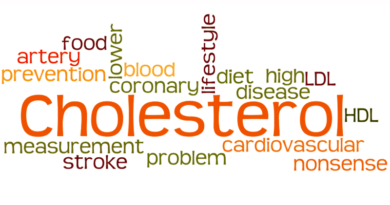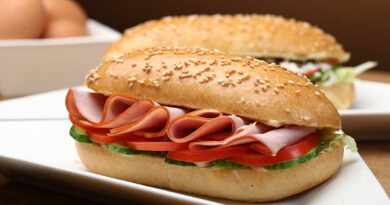Chocolate & cardiovascular disease
On Tuesday 16th June 2015 we woke up to the news: “Two chocolate bars a day ‘reduce risks of heart disease and stroke‘”.
The claim for stroke and coronary heart disease together (what is termed cardiovascular disease – CVD) was a 14% risk reduction.
Here’s the full study (not sure it’s still on open view sadly – it was at the time). Table 3 is where they get the headline numbers from, for those interested.
I’m not going to do the usual association vs. causation and work out the absolute risk this time. I need a break from doing the same thing over and over and hopefully you feel the same!
What I will look at is four things: i) the implications of headlines like this ii) is there a plausible mechanism? iii) what could really be going on here and iv) a recent chocolate study that fooled the world.
The implications of headlines like this
The previous week’s headlines on nuts may make people think ‘I just need to eat a couple of brazil nuts a day and I can compensate for all the bad lifestyle choices I make…’ Following this story, people may be thinking ‘I can carry on eating two Mars Bars a day and not only is it not bad for me – it will reduce my risk of dying.’
That’s the implication of this headline, because there was no claim that very dark chocolate, with high cocoa content, was being measured here. Indeed the study noted (p7): “Milk chocolate was more frequently consumed than dark chocolate in this cohort; however, we still observed a reduced risk of CVD.”
This makes no sense. When researchers find something, they have to offer what is known as a plausible mechanism (a sensible explanation for how, in this case, confectionery might be able to lower CVD risk).
Is there a plausible mechanism?
The attempt to offer a plausible mechanism can be found in the “Discussion” part of a paper and the discussion in this one is well worth a read. First, the researchers explore the limitations of dietary questionnaires, which are known to be very unreliable. You can see this for yourself – try to write down now everything you’ve eaten for the past 7 days and see how accurate you think it is. Bearing in mind you will be more likely to think it is accurate because you will trust your memory. You are more likely to remember actual meals than grazing, snacking and leftovers.
Option 1:
The discussion claims that under-reporting occurs “particularly among women and participants who are obese.” No judgement! The discussion continues by suggesting that sweets and snacks may be less likely to be declared by those with greater CVD risk such as the obese and physically inactive. So now ‘women; fatties and couch potatoes’ are being singled out for under-reporting!
Being judgmental would have some scientific validity if it were true. Under-reporting generally does not offer a plausible mechanism for the observed link between chocolate consumption and incidence of CVD unless – as the researchers note – those with greater CVD risk under-report. (If those with greater CVD risk under-report, then those with lower CVD risk look like they eat relatively more). If this were the case, we would expect the baseline characteristics of the lowest chocolate intake group to show a higher BMI and lower activity. There is some difference in activity levels (18% active in the lowest intake group vs 20% active in the highest intake group) but no difference in BMI (average BMI of 26 in all groups).
Option 2:
Is it the case that chocolate has some nutritional properties that would reduce the risk of CVD? The researchers did explore the dark vs. milk chocolate issue – that dark chocolate has been found previously to be the one with benefit. They suggested that not only the flavonoids in chocolate (more abundant in dark chocolate), but also other compounds possibly related to milk constituents such as calcium and fatty acids may provide an explanation for the observed association. No evidence was found for any great properties of confectionery, however, and this would need to be countered by the substances in confectionery known to be unhealthy – like sugar, sweeteners, additives, vegetable oils and possibly hydrogenated fats.
That was about it for possible explanations, leading the researchers to conclude: “… this observational study cannot provide evidence on the potential causality of the observed association.” i.e. we’ve explored a few options, but we don’t have a clear plausible mechanism.
If a study found that people who support Manchester United wear red socks, this would have a greater plausible mechanism than Mars Bars reduce your risk of strokes!
What could really be going on here
I always start with baseline characteristics (Table 1) when I look at studies like these and one line jumped out immediately. The chocolate consumption was divided into five, fairly evenly sized, groups of approximately 4,000 people in each. The name for one of any five groups is “quintile”. The lowest quintile (lowest intake of confectionery) had a 4.6% incidence of diabetes. The highest quintile (highest intake of confectionery) had a 0.7% incidence of diabetes.
The lowest quintile was in fact the group of all the people consuming no chocolate whatsoever. Their daily intake was zero grams of confectionery. The immediate obvious thought is – people with diabetes don’t eat confectionery. They would be mad to do so. The 0.7% of people with diabetes in the highest intake group are the ones risking their health.
The researchers showed that they too had spotted this with the following comment in the discussion: “It is possible that part of the observed association could be explained by reverse causality in that people with a higher risk profile, including those with obesity, diabetes mellitus, or prevalent CVD, eat less chocolate-containing foods than people who have a perceived healthy risk profile.”
That would be my most obvious “what’s really going on here”. “People with diabetes avoid confectionery.” As a finding, that would hardly grab the headlines.
Talking of headline grabbing, it was very interesting to note that the average intake for the highest quintile was 24.9 grams per day. That’s half a Mars Bar – not two bars. Why the discrepancy? The range of consumption in the top group was from 16 to 99 grams per day. That’s a third of a Mars Bar to two Mars Bars. This was presented as the more headline grabbing “two chocolate bars a day”. “Half a Mars Bar” would not have had the same effect, I guess.
The chocolate study that fooled the world
It was somewhat unfortunate for this Scottish study that it came on the back of a scam that went viral on the internet. In December 2014, a journalist called John Bohannon was approached by a German TV reporter called Peter Onneken. He and his colleague, Diana Löbl, were working on a documentary film about the junk-science diet industry. They set about doing a genuine clinical trial with the end in mind of a headline “Chocolate helps weight loss”.
A GP in on the scam ran the clinical trial. 5 men and 11 women were recruited (aged 19 to 67). One group followed a low carb diet. Another followed the same low carb diet with 1.5 oz (42g) of dark chocolate daily and the rest (the control group) made no change to their usual diet. The trial lasted 21 days.
You can immediately see that this will work. The low carb diet will make the difference and the dark chocolate has been added to this at such a level that it will have little adverse difference. Indeed, both treatment groups lost about 5lb; the control group lost nothing. The headline was achieved. (The link goes through just how the trial could be stacked in the researchers’ favour so that it would give statistically significant results).
The story was accepted by a journal! This was the journal. If you search on chocolate, or Johannes Bohannon, nothing is returned, suggesting that the humiliated journal has removed the original article. Here it is for posterity.
The story made the front page of Bild, Europe’s largest daily newspaper. The Daily Mail ran the story as “Pass the Easter Egg! New study reveals that eating chocolate doesn’t affect your Body Mass Index”. The headline is still there, but the text has been changed to cover a different, Australian, study. There is a note at the end of the article “A previous version of this article made reference to a German study which claimed a link between cocoa diets and weight loss. We have removed this reference as the study was subsequently revealed to be incorrect.” The study wasn’t incorrect – the study was perfectly correct – the reporting was poor. Thankfully not the UK team, but someone for Daily Mail Australia.
At least the Daily Mail has updated the story. As has the Huffington Post. Their original article: “Excellent news: Chocolate can help you lose weight” has been updated to “Chocolate weight loss study’s authors reveal report was fake (UPDATE).”
At the time of writing this post, The Express site had not revised the story “Chocolate accelerates weight loss: Research claims it lowers cholesterol and aids sleep”. The original article is still up quoting Johannes (not John) Bohannon, “research director of the nonprofit Institute of Diet and Health” (the ”Institute of Diet and Health” was also made up for the scam.)
The Times of India is still reporting: “Need a ‘sweeter’ way to lose weight? Eat chocolates!”.
The final thought
We clearly need to apply a common sense filter to all media reports about nutritional studies. Will two brazil nuts a day extend your life? No. Will two Mars Bars a day reduce your risk of cardiovascular disease? More likely the opposite. Will chocolate help you to lose weight? Sadly not! Will there be another nonsense nutritional study before next week? You can bet your life on it.




What’s wrong with just plain organic raw or “Dutch Processed (alkalised)” cocoa as a beverage or ingredient in a chcolate flavoured recipe? What’s wrong with making your own chocolate with organic cocoa solids and cocoa butter? And sweetening it – if you prefer some sweetness – with a natural product such as stevia, or with one that occurs naturally in the human body – specifically the amino acid glycine, which I myself use as a sweetener? Or, even, say erythritol or xylitol? Or a combination of sweeteners so that the amount one uses and ingests of any one of them is reduced?
Hi, the irony of the irony is, that they may have hit with a real phenomeon; the long-chain saturated fats of cocoa butter may be helpful. (btw, I never ran into this joke study before).
Fireinabottle -guy popularized the ROS -theory from Petro’s Protons (hyperlipid). He did not understand the long-time correlation (paradox) from France, that there are the fewest obese people and the fewest CVD in Europe. The saturated fat consumption is the biggest in Europe, however, their sugar/carbs consumption has been steady-and-significant all-along. There cannot be causation without association (like you show with your fats-in-europe maps).
So he took a model out of one mousestudy from Peter’s blog, where those mice recieveing the longest-chain saturated fats, surpricingly developed the least weight. As if satiation and subsequent small-hunger was caused by the transient insulin resistance and fat burning, provided that the fat is saturated enough i.e. long-chain.
Probing on himself, a lowish-carber, the new stearic acid based diet (and liberal carbs to demonstrate distance from normal LCHF) melted away the middle balloon. It is called “croissant diet”. Ok, he is selling the purified stear-fat by now, but there seems to be successful followers.
Back to joke science: the low-carb regimen was know to be successful in comparison to SAD aka SGD. If you add to this very long chain fatty acids in form of cocoa butter, it would fulfil the “croissant diet” specs. And make people to eat less, hopefully.
Of course this is pure speculation, the small “study” was never interested in, what the subjects actually ate. If they followed their regimen and “hunger” and ate to it, maybe the small trend created was true.
JR
I regularly use that address and receive replies.
I think it is a great shame that all the boffins can’t see outside their test tubes. Surely the purpose of chocolate of any kind is to make you FEEL better, or have you all forgotten the true statement that any statestition can manipulate the results to prove anything they want.
I understand that we have Milton Hershey to thank for much of the flood of cheap, unhealthy “chocolate” confectionery that has swept over the world in the past century and a bit. In 1894 he opened his first factory; I heard from a man who runs his own high-quality chocolate company that it was Hershey who first realised it was possible to take a little of the dark chocolate that was fashionable among the wealthy, add a lot of sugar and dairy, and sell it as chocolate. Cadbury and the rest followed in his highly profitable footsteps.
Actual unprocessed cocoa (cacao) is actually good for us, but when we hear chocolate, we think of candy. Real cocoa does have health benefits, but not the candy.
That distinction must be made loud and clear.